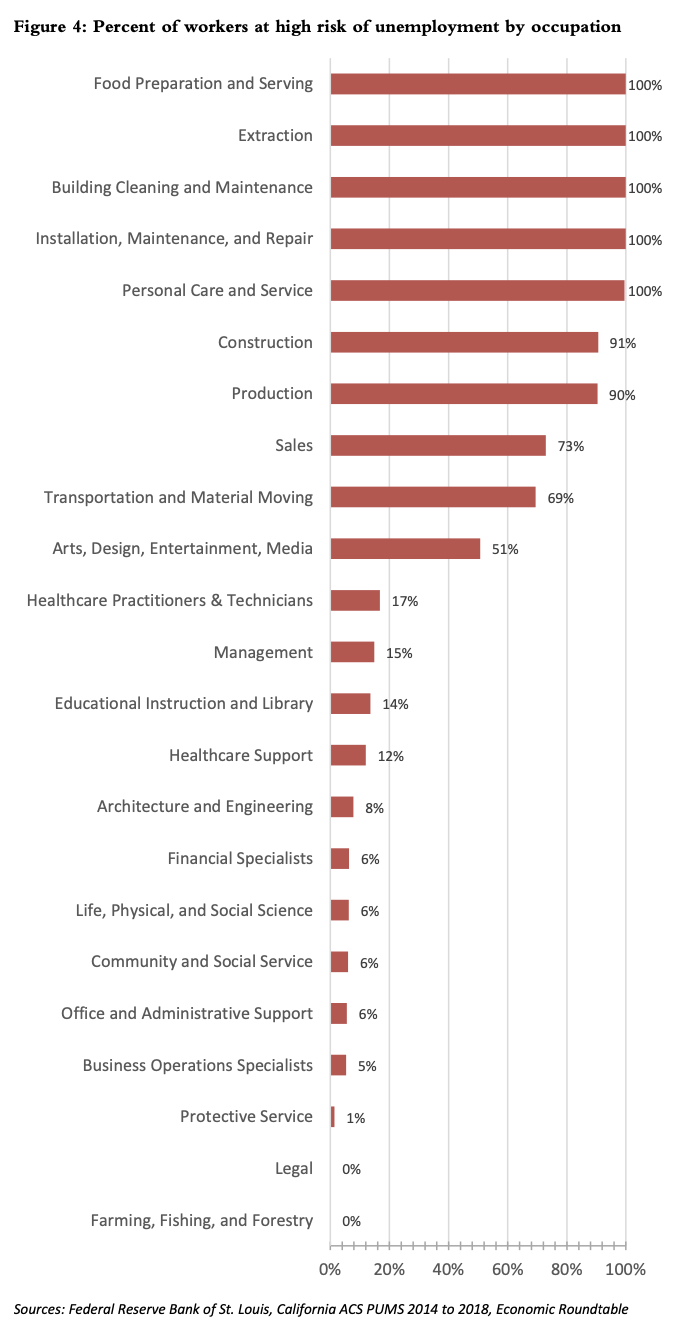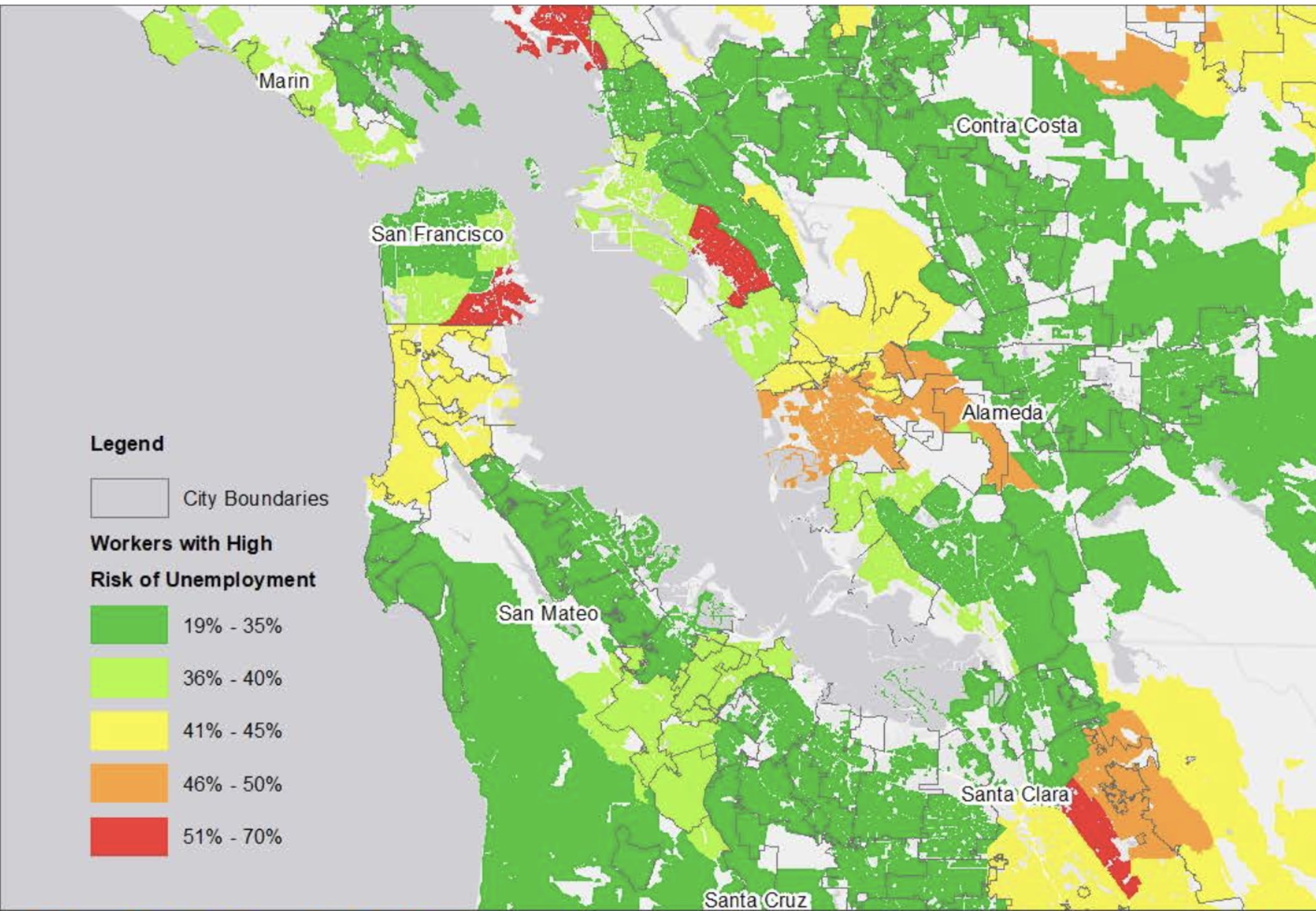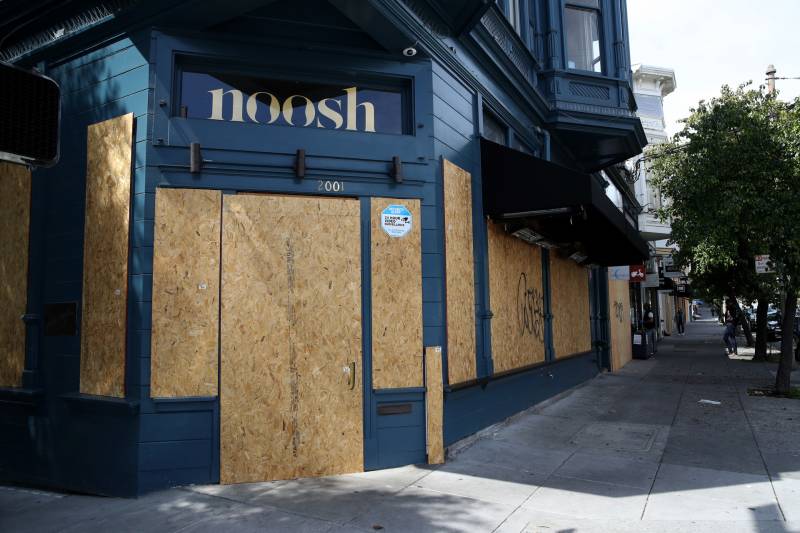Flaming said there is a "real risk" of many workers and communities being overlooked.
The report relies on three predictive factors established by the Federal Reserve Bank of St. Louis to determine the risk faced by different types of workers in California. It suggests that those least likely to lose work during the state's ongoing shelter-in-place restrictions have groups that are either essential to public health and safety, can be conducted remotely or are typically salaried positions.
Researchers determined that 43% of California's workforce do not fit within any of these categories and are at risk of losing — or in some cases have already lost — their jobs.
The report also notes that certain groups of typically low-wage workers — including those "who prepare and serve food, do janitorial work, [and] provide personal care such as child care" — are at extremely high risk of losing their jobs, with little likely savings to fall back on.

And things could get worse, the report's authors caution, emphasizing that as "many more workers in high-risk jobs will become unemployed in the coming months as demand for goods and services by both businesses and workers continues to shrink."
And Flaming says prospects for those entering the job market are also grim.
"I think that's one thing that should be on our radar screen — is the needs of young people and, conceivably, the need to create programs that can employ them and use their talents and give them a chance to earn a livelihood," he said.
The unemployment threat is also highly concentrated in certain geographic areas, according to the report, which identifies Stockton, Bakersfield, the Los Angeles metropolitan area and the Inland Empire as the highest risk areas.
The report includes a list of recommendations of resources that federal, state and local leaders will need to provide to support the communities hardest hit during this prolonged period of crisis. For example, it stresses the importance of ensuring food banks have "adequate food inventories and staffing in communities where there is a high need" and providing legal aid and outreach staff who can help residents take advantage of full economic relief benefits.
Flaming said providing that financial support now could help mitigate some of the economic impact to the state down the road.
"A lot of families don't have a financial cushion. And with sudden unemployment, families really can't put food on the table," he said. "Food banks and community outreach and education and legal assistance services are a lot cheaper than income maintenance."
Here's a list of KQED resource guides for workers impacted by the coronavirus:



